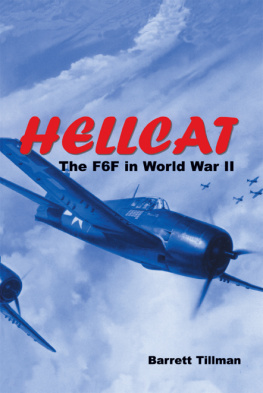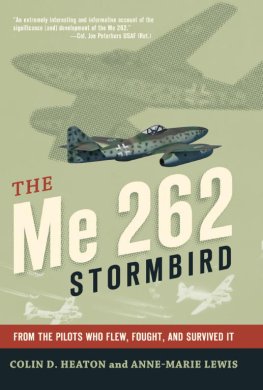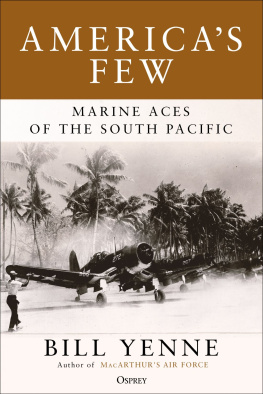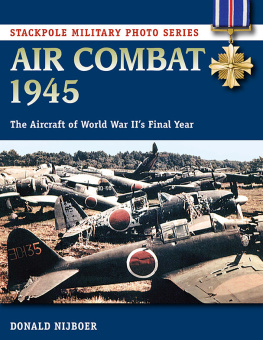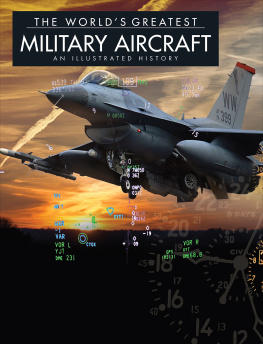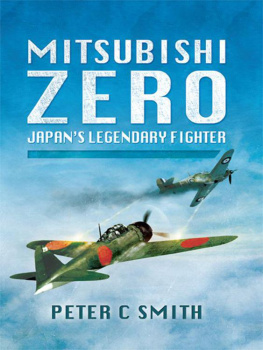Hellcat
Hellcat:
The F6F in World War II
By Barrett Tillman
NAVAL INSTITUTE PRESS
Annapolis, Maryland
This book has been brought to publication by the generous assistance of Marguerite and Gerry Lenfest.
Naval Institute Press
291 Wood Road
Annapolis, MD 21402
1979 by the U.S. Naval Institute, Annapolis, Maryland
All rights reserved. No part of this book may be reproduced or utilized in any form or by any means, electronic or mechanical, including photocopying and recording, or by any information storage and retrieval system, without permission in writing from the publisher.
First Naval Institute Press paperback edition, 2000
ISBN 978-1-61251-189-4
The Library of Congress assigned catalog card number 78-58824 to the hardcover edition of this book.
To my valued friends of
The American Fighter Aces Association
These were honored in their generations and were the glory of their times.
Ecclesiasticus XLIV, 7
Legends for chapter opening photographs follow:
An F6F-5 of a carrier training unit aboard the USS Puget Sound (CVE-113).
A lineup of F6Fs at the Munda airfield in the New Georgia island group in September 1943. Among land-based Hellcat squadrons in the Solomons were VF-33, VF-38, and VF-40.
The end of a working day aboard an Independence-class light carrier as F6F-3s of the combat air patrol are recovered at dusk, February 1944.
A division of Fighting One F6Fs. Flying from the the USS Yorktown, VF-1 saw heavy combat in the Bonins and Marianas during June and July of 1944.
An F6F-5 of VF-74 aboard the escort carrier Kasaan Bay, ready to launch on a strike mission against southern France on 15 August 1944. Photo: R. M. Hill
Catapult crewmen prepare a VF-29 F6F-3 for launch from the light carrier Cabot during operations against Formosa in early October 1944. Photo: R. M. Hill
Lieutenant Charles R. Stimpson, top scorer of VF-11. He was one of only four fighter pilots to achieve ace status in both the F4F Wildcat and the F6F Hellcat. On 14 October 1944, he shot down five Zekes in one mission. Photo: R. M. Hill
An F6F-5N night fighter with mixed armament of two 20-mm cannons and four .50-caliber machine guns. The -5N was by far the most numerous version of all Hellcat night fighters. Photo: R. P. Gill
An F6F burns on the Lexington, 25 February 1945. The pilot escaped safely.
Six aircraft of VF-88 off the Yorktown in August 1945. This squadron fought the last Hellcat combat of W. W. II on August 15 shooting down nine Japanese fighters for the loss of four F6Fs.
Contents
It is a distinct honor and pleasure for me to have been asked to write the foreword to such an outstanding, well-organized, and expertly written book. I must admit, however, that it is difficult to do when one is personally mentioned in the manuscript.
This book is much more than just an account of actions and recorded events in which the Hellcat participated. It is also a dedicated memorial, not only to the combat pilots who flew the F6F so gallantly, but also to the designers, draftsmen, and test pilots who brought this plane on when our country was in desperate need of it to counter the opposition. And it is also a memorial to the thousands of people who kept these planes flying, often under the most adverse conditions of war.
No aircraft company can be more proud of the products produced, developed, and delivered than Grumman Aircraft of Bethpage, Long Island, and Pratt and Whitney Engines of Hartford, Connecticut. Their executives, many of whom I knew personally, were without doubt the best in the field. But a special vote of thanks is also due the American public, without whose funds the Hellcat would not have been available when needed.
It would be a serious omission not to mention that Barrett Tillman has spent countless hours and much effort putting together this book. He has carefully and diligently researched the historical files for combat action reports of the various fighter squadrons, and interviewed numerous people who were involved with or flew the F6F in combat.
I can truly recommend this book, both for the accuracy of what is recorded and for the enjoyment that a reader will reap by being able to identify with the persons and events described.
David McCampbell
Captain, U.S. Navy (Retired)
The Grumman F6F Hellcat was the U.S. Navys air superiority fighter of the Second World War, just as its lineal descendant, the F-14 Tomcat, performs that role today. And though it may seem anachronistic to refer to the F6F as an air superiority fighter, it is nevertheless appropriate. For in spite of the fact that terminology as well as technology have changed in three decades, the nature of the mission has not.
Fighter-versus-fighter combat is what air superiority is all about. The combatant best employing his fighters will ultimately control the sky, allowing his own strike aircraft to do their work while denying such use to the enemy. Therefore, when two hostile fighters engage one another, the strategic implications transcend the tactical solution as to which opponent finally flies home.
According to the official record, 19 out of 20 times it was the Hellcat which flew home. The F6F made its combat debut in the early fall of 1943, at the beginning of the long Pacific offensive. But the Hellcat was not only in the spearhead of the thrust which led to Tokyo Bay; it was the tip of the lance. In 24 months of combat the angular fighters from Long Island were credited with over 5,000 Japanese aircraft destroyed in aerial combat, gaining outright air supremacy over invasion beaches. This success helped make possible the imaginative series of amphibious conquests which marked the Central Pacific campaigns.
The Pacific War was fought by identifiable stages, and each stage saw one aircraft which was instrumental during that period. The first, as described in my previous book, was the Douglas SBD Dauntless dive bomber which in 1942 may not have actually won the war, but most certainly shaped its course and prevented defeat at Midway and Guadalcanal. In 1945 the most influential aircraft was the Boeing B-29 strategic bomber, which literally burned out the heart of Japanese industry. Combined with the U.S. Navys submarine campaign against Japans merchant marine, Superfortresses crippled the enemys ability to sustain aggressive war and helped render a bloody invasion unnecessary.
In between was the Hellcat, which was largely responsible for subduing Japanese air power wherever the Fast Carrier Force sailed. As a result, I believe the F6F was the most important Allied aircraft in the Pacific during 194344. After all, the B-29s flew from bases in the Marianas where the Hellcats greatest victory took place.
Despite the passage of three decades, the F6F story may hold lessons for today. The argument is made that the aircraft carrier is obsolete, that no other major power builds fixed-wing aircraft carriers, and that the flattop is vulnerable to the cruise missile. This line of thought ignores the fact that the Soviet Navy has commissioned its own aircraft-carrying warshipsthe VTOL-equipped Kiev class. Nor does it consider the logic which insists that all surface vessels are potentially vulnerable to the new missile threat. And it completely overlooks an historical parallel from the Hellcats career. The U.S. Navy has already dealt with the cruise missile in its most gruesome formthe Kamikaze suicide aircraft. Hellcats were instrumental in defeating this threat, the most serious ever directed against carriers. It is a fact which should not lead us into complacency, but neither should it warp our perspective or our confidence.
Next page
